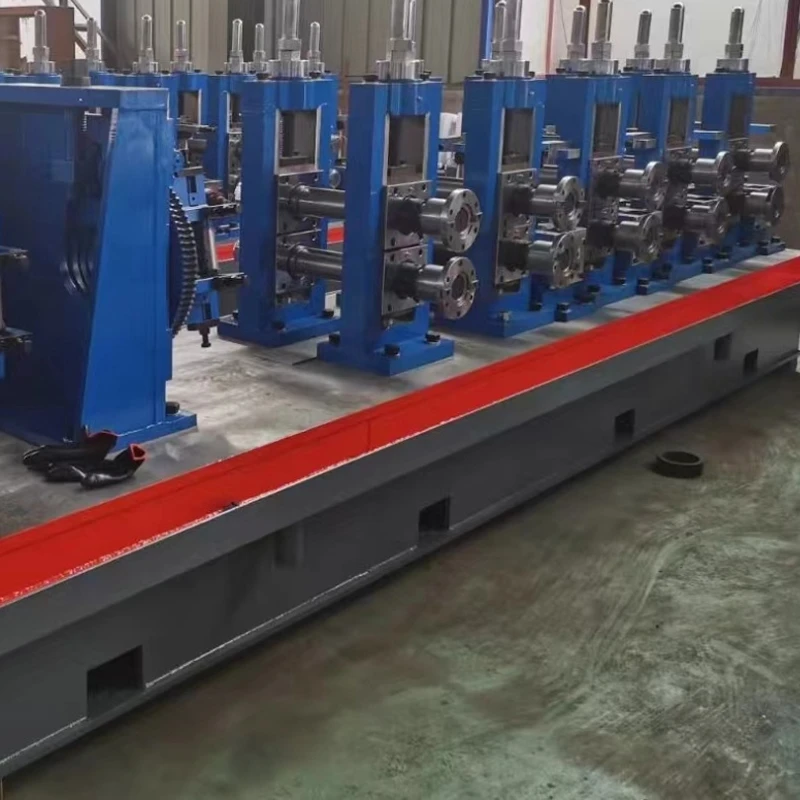Sheet Compression and Flattening Equipment for Efficient Production Processes
The Revolution of Sheet Flattening Machines A Leap Towards Efficiency and Precision
In the manufacturing and packaging industries, the process of handling and preparing sheets of various materials—such as metal, plastic, or paper—is critical. Whether these sheets are intended for further processing, transportation, or final delivery to clients, ensuring they are flat and free from defects is essential. This is where sheet flattening machines step into the spotlight, revolutionizing how these sheets are treated and prepared.
Sheet flattening machines are specialized devices designed to eliminate warping and inconsistencies in sheet materials. These machines utilize a series of rollers and pressure systems to apply even force across the surface of the sheets, effectively compressing and flattening them to achieve the desired specifications.
Importance of Sheet Flattening in Manufacturing
The significance of flat sheets in manufacturing cannot be overstated. Irregularities in sheet dimensions can lead to significant issues during subsequent machining processes. For example, unflat sheets can cause misalignments and defects in cutting, stamping, or welding processes. This can ultimately lead to product failure, increased waste, and higher operational costs. Thus, the need for high-quality sheet flattening is not just a matter of aesthetics; it’s a fundamental requirement for operational efficiency and product integrity.
How Sheet Flattening Machines Work
Modern sheet flattening machines incorporate advanced technology to improve their efficacy and reliability. Most commonly, they feature multiple rollers through which sheets are fed. The rollers are placed at strategic intervals and designed to exert varying levels of pressure, accommodating different material types and thicknesses.
1. Feeding Mechanism The process begins with the feeding mechanism, which ensures that the sheets are fed uniformly into the machine. Some machines are equipped with automatic feeding systems that minimize human intervention and enhance precision.
2. Roller Configuration The layout and specifications of the rollers are crucial. Some machines use a combination of heated and non-heated rollers, allowing for adjustments depending on the material’s needs. Heated rollers help to soften certain materials, making them more pliable and easier to flatten.
sheet flattening machine

3. Pressure Control Control systems enable operators to adjust the pressure applied to different thicknesses of sheets. This capability minimizes the risk of damage while maximizing the flattening effect.
4. Output Quality Inspection Many modern machines come with integrated quality control systems that assess the flatness of the output sheets. These systems can detect imperfections and ensure that only sheets meeting exacting standards move on to the next stage of production.
Benefits of Using Sheet Flattening Machines
1. Increased Production Efficiency By automating the sheet flattening process, manufacturing facilities can greatly enhance speed and efficiency. The ability to handle larger quantities of materials in shorter timeframes boosts overall productivity.
2. Consistency and Quality Automated machines ensure that every sheet meets the same quality standards, thereby reducing variability. Consistent quality is particularly important in industries that require tight tolerances, such as aerospace and automotive manufacturing.
3. Reduced Waste With fewer defects and higher-quality outputs, sheet flattening machines significantly reduce material waste. This not only lowers costs but also contributes to sustainability efforts by making the best use of resources.
4. Versatility Contemporary sheet flattening machines are designed to handle a wide range of materials, from metals to composites to plastics, making them versatile tools in today’s diverse manufacturing landscapes.
Conclusion
As industries evolve and the demand for precision increases, sheet flattening machines play an indispensable role in ensuring the integrity and quality of sheet materials. Their contribution to enhancing operational efficiency and reducing waste makes them a crucial investment for manufacturers aiming to maintain a competitive edge. The continuing advancements in technology promise even greater efficiency and reliability, heralding a new era in the manufacturing processes that rely on the precision of flat sheets. Embracing these innovations is an essential step towards achieving excellence in production and meeting the ever-growing demands of the market.
-
High Frequency Straight Seam Welded Pipe Production Line|BzZhou Xinghua|Precision Welding&EfficiencyNewsJul.30,2025
-
High Frequency Straight Seam Welded Pipe Production Line - BzZhou Xinghua|Precision Engineering&EfficiencyNewsJul.30,2025
-
High-Frequency Straight Seam Welded Pipe Production Line-BzZhou Xinghua Machinery Equipment Manufacturing Co., LTD.NewsJul.30,2025
-
High-Frequency Straight Seam Welded Pipe Production Line-BzZhou Xinghua Machinery Equipment Manufacturing Co., LTD.|Precision Manufacturing, High EfficiencyNewsJul.30,2025
-
High Frequency Straight Seam Welded Pipe Production Line-BzZhou Xinghua Machinery Equipment Manufacturing Co., LTD.|Precision Steel Pipe Manufacturing&Industrial EfficiencyNewsJul.29,2025
-
High-Frequency Straight Seam Welded Pipe Production Line-BzZhou Xinghua Machinery Equipment Manufacturing Co., LTD.|Precision Steel Pipe Manufacturing&Industrial EfficiencyNewsJul.29,2025


